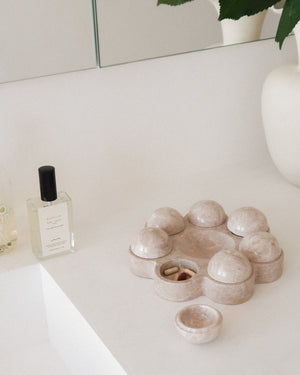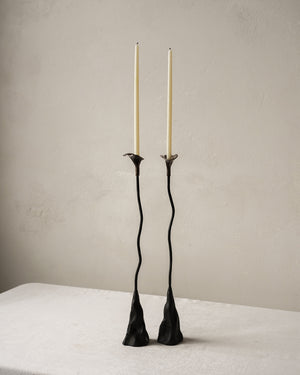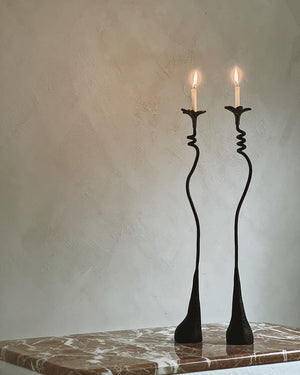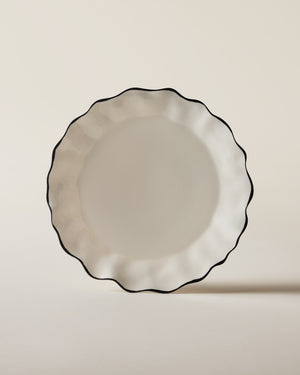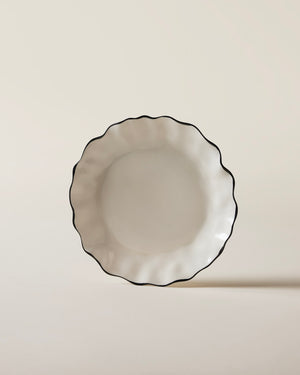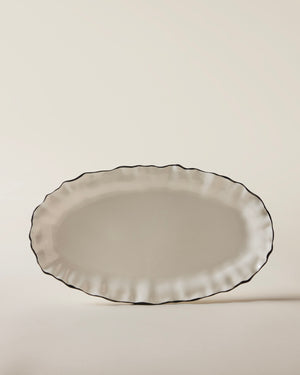5 WOMEN ARTISTS YOU SHOULD KNOW
One look at our artist roster and it's pretty clear we're into the ladies. So, celebrations for International Women's Day were naturally in order. We've rounded up a group of female artists we love, and want to make sure you know! From the Founding Mother of abstraction, to a trailblazing indigenous sculpture goddess, to female artists known as much for their work in arts education as their personal practices - read on to learn more.
 |
Hilma af Klint
Hilma af Klint was a Swedish artist ahead of her time in many ways. Born in 1862, she was one of the first women to attend the Royal Academy of Fine Arts in Stockholm, where she studied painting, drawing, and sculpture. However, her true passion lay in exploring the spiritual world and the mysteries of the universe, which led her to create a unique body of work that was unlike anything else being produced at the time. Her paintings were characterized by bold colors, intricate patterns, and geometric shapes that reflected her interest in spiritualism, theosophy, and other esoteric beliefs. Despite her innovative approach, af Klint's work was largely ignored during her lifetime and it wasn't until many years after her death that her contributions to the art world, specifically to abstraction, were fully recognized. Today, she is considered a visionary artist whose work continues to inspire and captivate audiences around the world.
|
|
Ruth Asawa
Ruth Asawa was a Japanese American artist and educator. Born in 1926 in California to Japanese immigrant parents, Asawa was interned with her family during World War II, yet went on to attend Black Mountain College where she studied under renowned artists such as Josef Albers and Buckminster Fuller. Her work is known for its intricate wire sculptures, which she began creating in the 1940s and continued to refine throughout her career. Asawa's sculptures were influenced by her interest in both nature and geometry, and were often inspired by the organic shapes of plants and the intricate patterns found in traditional Japanese basket weaving. In addition to her artistic work, Asawa was also a passionate advocate for arts education and worked tirelessly to promote the value of art in schools. She founded the San Francisco School of the Arts and was a champion for public art projects in her community. Today, Asawa's legacy lives on through her stunning sculptures and commitment to making art accessible to all.
 |
Maria Martins
Maria Martins was a Brazilian visual artist. Born in 1894 in Rio de Janeiro, Martins began her career as a painter before turning to sculpture in the 1940s. Her works combined Western, and especially surrealist, influences – the result of her perpetually nomadic life – with Amazonian forms and legends, which at the time were seldom explored by her fellow Brazilian artists. Her work was characterized by its bold, organic forms and its use of bronze and other materials. In addition to her artistic work, Martins was also a diplomat and a socialite, and she counted many notable figures among her friends and acquaintances, including Salvador Dali, Pablo Picasso, and Frida Kahlo. Though her work was not widely recognized during her lifetime, Martins is now considered an important figure in the history of modern art.
 |
Alma Thomas
Alma Thomas was an African American artist who made significant contributions to the world of abstract art in the mid-twentieth century. Born in Georgia in 1891, Thomas was a teacher before turning to painting full-time in the 1950s. Her work was characterized by its vibrant colors and its use of geometric shapes and patterns, and it was heavily influenced by her interest in nature and the environment. Thomas was particularly known for her use of the "Alma Stripe," a technique in which she painted stripes of color onto her canvases. Her work was often compared to that of other abstract expressionists of the time, but it was also unique in its incorporation of African American cultural and artistic traditions. In addition to her artistic work, Thomas was also a trailblazer in the field of education, becoming the first African American woman to teach art at a public high school in Washington D.C. Today, Thomas is considered a pioneering figure in the history of American art.
 |
Barbara Hepworth
Barbara Hepworth was a modernist English sculptor best known for her abstract, spatial compositions and large-scale works. Born in 1903 in Yorkshire, Hepworth studied at the Royal College of Art in London, where she developed her signature style of abstract, organic forms. Her work was heavily influenced by her interest in nature, and she often used materials such as stone, bronze, and wood to create sculptures that appeared to flow and twist like the natural world around them. Hepworth was also an important member of the British modernist movement, and she was a founding member of the influential artist's group, Unit One. In addition to her artistic work, Hepworth was a passionate advocate for art education, and she worked to promote the value of art in schools and universities throughout her career. Today, Hepworth is considered one of the most important sculptors of the twentieth century.
